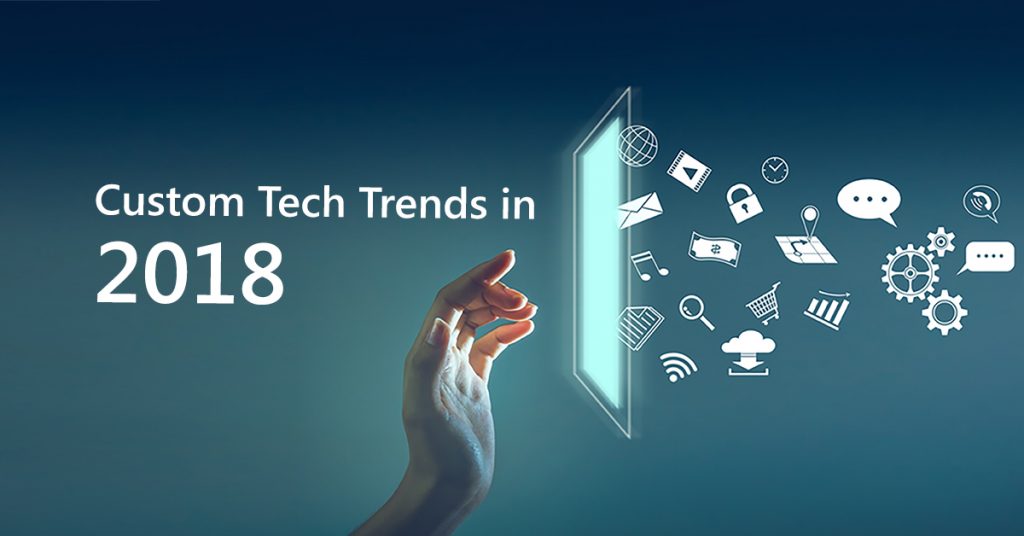In 2017, we saw various learning technologies evolve, which have paved way for better, effective, and valuable L&D technology applications in 2018. While many technology trends of 2017 such as microlearning, social learning, personalized learning, video-based learning, etc., emerged as catalysts in delivering effective learning experiences across organizations, they are expected to stand out this year as well with other emerging trends.
On this Page
So, what are the trends that can be expected in 2018?
Here are a few tech trends that we feel will immensely contribute to the learning and development space.
- 1. Microlearning Gone are the days when learners could take up hour-long courses online. 2018 will be the year of bite-sized learning. The short attention span of human beings is one among many reasons why learners need information in small chunks. Bite-sized learning or microlearning provides information to learners in digestible nuggets or formats. The priorities of the L&D industry are now shifting towards building a learning library that can be distributed to learners through an LMS. An LMS supports microlearning and enables you to upload small chunks of information and training material in the form of documents, URLs, videos, PPTs, and many more which are beyond typical online course formats. In 2018, with an agile and technology-driven learning approach, training courses will be delivered in various easy-to-learn formats such as links and URLs, review documents, short videos and audios, infographics, etc. that will be available on-demand to learners.
- 2. Social Learning In today’s time, it is imperative for trainers and organizations to keep learners engaged. Sharable and interactive content in various formats is crucial to making learning happen. In 2018, LMSes will empower social learning through forum discussions related to courses and general discussions on learning platforms with features like Comment, Like, and Share. Social learning will enable learners to interact and stay motivated and engaged to meet their learning goals.
- 3. Digital Badges Also referred to as digital credentials, digital badges are a trend to watch out for in 2018. A digital badge has value if it has a trusted source and is recognized and accepted by various employers, learners, and others. Such a badge could stand for the developed skills, performance, and achievements during a learner’s journey. It also emphasizes the desirable professional skills of a learner. Sharing these digital badges online directly from the LMS dashboards will encourage and motivate learners to develop more skills, improve their performance, and grow professionally. These can act as a replacement for documented certifications that existed a couple of years back and which were rarely shared with the world. It is believed that in 2018, digital badges will become popular in corporate organizations and will become trusted credentials for professional certification courses from different associations, institutions, and companies.
- 4. General Data Protection Regulation (GDPR) This trend is specific to strengthening and unifying data protection in Europe and the United Kingdom. It’s a regulation that will imply across Europe and UK from May 25, 2018, for companies collecting data from the citizens of these countries. LMS product companies will be required to state the purpose of information requested at the time of registration of the user like name, contact number, email address, and various other additional details. The consent of the user to use the captured information will play an important role in data processing. It will be essential to have details related to product security testing, release management, data protection, and security features that they have opted from hosting service providers like Amazon Web Services, Microsoft Azure, Google Cloud, etc. documented. The regulation would comprise strict new data privacy rules for companies to comply with data processing, what type of data can be collected, how it can be revealed to anyone through a system, how citizens can access, edit, and delete data that is related to them and a lot more. This will be a challenge for LMS companies and hence, 2018 will witness how they respond to this fundamental change in compliance.
- 5. Specialist LMSes Today, the LMS market has over 700 vendors who bring various learning delivery solutions to the table. However, there are a few who aim at solving niche business challenges with special thoughtfully designed LMSes. Unlike the general understanding of an LMS as a solution for training delivery, some specialist LMSes offer unique solutions that differ from these mainstream LMSes. These are more like precision tools and solutions built for customers to combat well-defined roadblocks. Such LMSes can be specific to the industry, challenge, or technology. In 2018, there will be more specialist LMS entrants in the market that will focus on very specific segments and challenges. For example – an LMS offering WordPress plugin to setup your own website is a good solution for firms planning to sell courses through a website.
- 6. Extended Enterprises The need for training and learning has gone beyond just employee compliance and other basic training. Organizations now prefer to step forward in leveraging LMSes and train partners, customers, suppliers, vendors, etc., who are a part of the business value chain. LMSes with multi-portal systems are an effective way to manage learning across different groups with large partnership networks, vendors, subsidiaries or geographies that are operating independently in various languages and are diversified or globally displaced. A multi-portal system is an easy to implement solution for companies where the HR decision making process is different (and/or independent) and varies from one geography to another. A multi-portal system in an LMS enables effective management of training across the organization and ensures faster communication and training.
- 7. Video-Based Learning As the saying goes, a picture is worth a thousand words, and you will agree that a video hence equals a million words. Use of video content is increasingly gaining popularity and 2018 will see a rise in video-based learning. This is because the amount of video content that is expected to be consumed in 2018 is vast. It is predicted that we’ll see most of the LMSes offer video-sharing, embedding videos within the LMS and sharing URLs of videos, etc. integrated within the learning system. Training employees using videos through an LMS will dominate the learning space in 2018.
- 8. Content Authoring IntegrationsContent authoring, which was so far limited to certain authoring tools, will see new dimensions and integrations in 2018. A few LMSes may now integrate content authoring tools within the system to provide a complete ecosystem for developing learning courses and training material for organizations. However, the challenge is whether it would be baked into the system or will it be integrated with the specific standalone system. The learning and development industry will be able to explore possibilities and applications accordingly with time.
- 9.Personalized Training As training is going digital, learning needs to be more personalized and a smooth learning experience is necessary for effective training. LMSes with learning paths will offer learners a customized and personalized learning experience to give the right information, in the right format, to the right learner. Learning paths will also contribute towards analyzing learner behavior and getting insights on their performance throughout the training.
- 10. Advanced Analytics and Reporting Gaining meaningful insights from advanced analytics and reporting of an LMS is expected to get more comprehensive in 2018. LMSes provide data that can be used to analyze learner behavior, learning patterns, performances, desirable skills, and so on. This is extremely helpful when it comes to developing learner-centric training programs for an organization. Minute details from reports give the power to monitor skills and filter performance gaps. Delivering learning experiences customized to learner-needs outlines the goals that an LMS can meet in 2018./
- 11. Responsive and Mobile-First LMSes An LMS that is mobile-first and responsive will have an edge in 2018. Bringing learning to people wherever they are and meeting their learning needs through multiple devices, is crucial in today’s time. Sterling Brands and Ipsos conducted a study in conjunction with Google (2012/2013). The study reveals that we now live in a Multi-Screen World. It also highlights the fact that about 90% of people switch between devices to achieve a goal, whether that’s on smartphones, PCs, tablets, or TV. Hence, with a responsive LMS, the users can continue their learning goals at home, and on the move – at any time and location as per their convenience. Responsive LMSes that can be accessed across a wide range of devices, offer appropriate viewing and interaction experience. This includes providing the learner a platform with an easy reading and navigation with least resizing, panning, and scrolling. In fact, learners are now on the lookout for native apps and not just browser-based experiences. LMSes that are beyond responsive, promise extensive accessibility and increase in course completion rates. Not just delivering learning, but also managing it away from desks, from any device is what responsive LMSes can offer organizations.
So, these are the 12 tech trends that one should watch out for in 2018. These innovations and applications have the potential to revolutionize the present learning technology space and lead to focused corporate training across organizations.
What is your opinion on these trends in 2018?
Contact us to know how we are shaping Abara LMS based on these trends!

